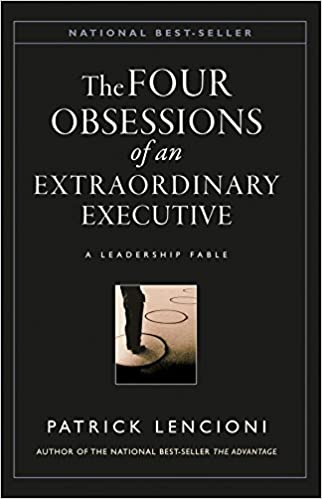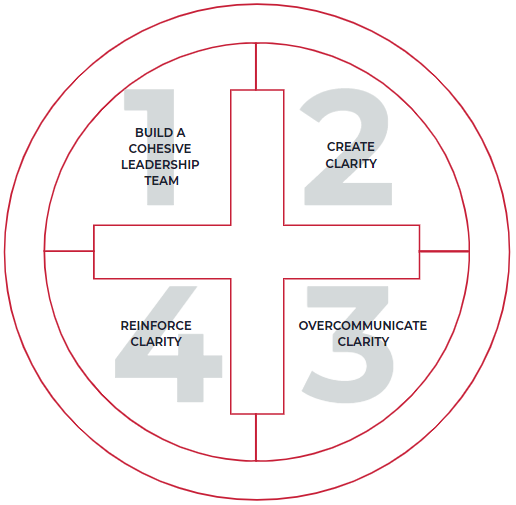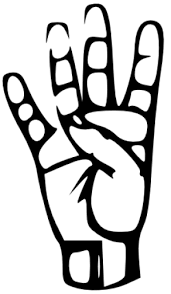
The book of the month is…
The Four Obsessione of an Extraordinay Executive (A leadership Fable) written by Patric Lencioni, an American writer of books on business management and team management. The book’s focus is on a leader’s role in building a healthy organization—an often overlooked but essential element of business life.
“Identity is about the company’s hiring values and its underlying motivation.”
ORGANIZATIONAL HEALTH: THE MODEL

What are The Four Obsessions of an Extraordinary Executive described in the book?
Here you can find the model!

DISCIPLINE ONE:
BUILD AND MAINTAIN A COHESIVE TEAM
“Cohesive teams are “efficient.” They arrive at decisions more quickly and with greater buy-in.”
The first and most critical step in a healthy organization is creating a cohesive leadership team that is committed to do the ongoing work of developing and maintaining a high-performing team and mastering the five behaviors. Building a cohesive leadership team is critical to enabling the other 3 disciplines. It requires considerable interpersonal commitment from an executive team and its leader. The essence of a cohesive leadership team is TRUST. This is marked by the absence of politics, unnecessary anxiety and wasted energy.
“The essence of a cohesive leadership team is TRUST.”
According to the author, the most important activity for building trust is getting to know one another at a level that few groups of people ever achieve. It is important that team members get comfortable letting their colleagues see them for who they are.

DISCIPLINE TWO:
CREATE ORGANIZATIONAL CLARITY
“Organizational clarity allows a company to delegate more effectively and empower its employees with a true sense of confidence.”
Creating clarity at the executive level is essential to building and maintaining a healthy organization. There are six simple but critical questions that need to be answered, eliminating all discrepancies among team members.
- Why does the organisation exist and what differences does it make in the world?
- What behavioural values are irreplaceable and fundamental?
- What business are we in?
- How does our approach differ from that of our competition?
- What are our goals this month, this quarter, this year, next year, five years from now?
- Who has to do what for us to achieve our goals this month, this quarter, this year, next year, five years from now?
An organisation that has organisational clarity possesses a SENSE OF UNITY around everything it does. The result is focus and efficiency and it creates an environment of empowerment.

DISCIPLINE THREE:
OVER-COMMUNICATE ORGANIZATIONAL CLARITY
“This is the simplest of the four disciplines, but tragically, the most underachieved. Why is this tragic? Because after having done all the work associated with disciplines one and two, it is a shame not to reap the benefits of those achievements. Especially when it is so simple.”
Once a leadership team has become cohesive and established clarity around the six critical questions, they need to communicate the answers to employees over and over again.
“Employees are not being kept in the dark about what is going on.”
Effective communication requires repetition in order to take hold in an organisation and simple messages – what employees want from their leaders is clear uncomplicated messages about where the organisation is going and how they can contribute to getting there.

DISCIPLINE FOUR:
REINFORCE ORGANIZATIONAL CLARITY THROUGH HUMAN SYSTEMS
“Build a sense of clarity into the fabric of the organization through processes and systems that drive human behavior.”
Organizational clarity (the six critical questions) must become embedded into the fabric of the organization. The following areas need to tie to the 6 questions:
- Recruiting and hiring,
- Managing performance,
- Compensation and rewards,
- Real-time recognition.
“Any company has to build the sense of clarity into the fabric of their organisation throughout processes and systems that drive human behaviour. The challenge is to do it without creating unnecessary bureaucracy.”
When an organisation adopts human systems properly it maintains its identity and sense of direction. It ensures that employees are hired, managed, rewarded, recognised and even being moved out of the company, for reasons that are consistent with its organisational clarity.
CONCLUSION
The fable is useful at helping you understand what a great organisation feels like, then transitions to enable you to see what it might look like from the outside.
So, why is it so critical for leaders to address The Four Obsessions of an Extraordinary Executive?
“There is nothing more important than making an organization healthy.”
